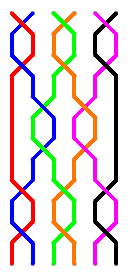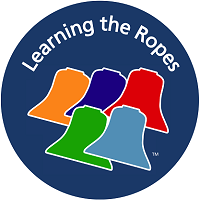Ringing Remembers ‐ what will your tower ring?
Armistice Day, November 11th falls on a Sunday this year. It is the 100th anniversary of the end of World War One – the war to end all wars as it was thought at the time. 1,400 ringers were lost during the First World War and Ringing Remembers is a nationwide project to recruit 1,400 new ringers to replace those lost and ring for the centenary of the Armistice.
Churches around the country are asked to ring during the morning for service half muffled in the traditional manner and a request has gone out for as many as possible to ring after 12:30 on open bells and make a joyeous sound. To quote Tennyson:
Ring out old shapes of foul disease;
Ring out the narrowing lust of gold;
Ring out the thousand wars of old,
Ring in the thousand years of peace.
Some people no doubt will ring quarter peals and peals, some will have open ringing. But if you have recruited ringers under the Ringing Remembers scheme what could you ring with such new ringers?
Most will ring rounds of course, some will be ready for Call Changes, the odd one or two may be ready to ring their first quarter, maybe on the tenor, but what else could you ring in tower that is simple, satisfying for the ringers and sounds great?

Mexican Wave

Big change, little change
When the bells are half muffled a few simple ideas
Whole pull and stand
A whole pull of rounds, then all but the tenor stands for a whole pull. The tenor ringer keeps rings this whole pull then the rest of the band join in again for another whole pull and stand. This sounds really great and sombre enough for the occasion. Maybe now is the time to start to practise?
Diminishing rounds
Everyone
rings rounds, then on the conductor’s call the treble sets the bell,
followed by the two, then the three etc. until only the tenor remains
ringing. The amount of whole pulls between each bell setting can be
variable and called by the conductor. Again this needs practise
beforehand to perfect but it too sounds great.
Whole pull Plain Hunt
This
is sometimes known as “a cure for melancholia” as whole pull Plain Hunt
sounds great half muffled. Again it requires practice and ringers need
to remember to lead for four blows – two whole pulls. You can start
teaching your band by explaining the theory of what is going to happen
and then talking your ringers through each change with more than one
whole pull thus slowing the whole thing down and making it more
manageable for early ringers to learn. Once they have got the idea they
can change after every whole pull. They will soon learn the pattern of
the numbers and they only change places at handstroke which they will be
familiar with from ringing Call Changes.
A few simple ideas for ringing when on open bells
Mexican Wave is a good choice as three strong ringers can support three new ringers. Each ringer has plenty of time to ring steady rounds and only has to move a place down, back to rounds, a place up and back to rounds.
Big change little change requires a little more skill. The ringers ring rounds for a whole pull, then move back into rounds for a whole pull, then just the internal bells change places for a whole pull and then go back into rounds for a whole pull. The tenor and the treble ringer have the easiest roles to play but of course a ringer on the treble must have learnt to lead. The conductor can call each move until such time as the band no longer need guidance and can ring it without assistance. The calls would be:
Go next time - big change – rounds – little change – rounds etc.
Kaleidoscope sequences uses a combination of long places, places and dodging. You could make a sequence up to suit the ringers in your tower and even give it a name!
Whatever you decide to ring on the day you can set your band a target to perfect your choices and you still have plenty of time to practise so that these simple things sound really great on the day!

Pip Penney